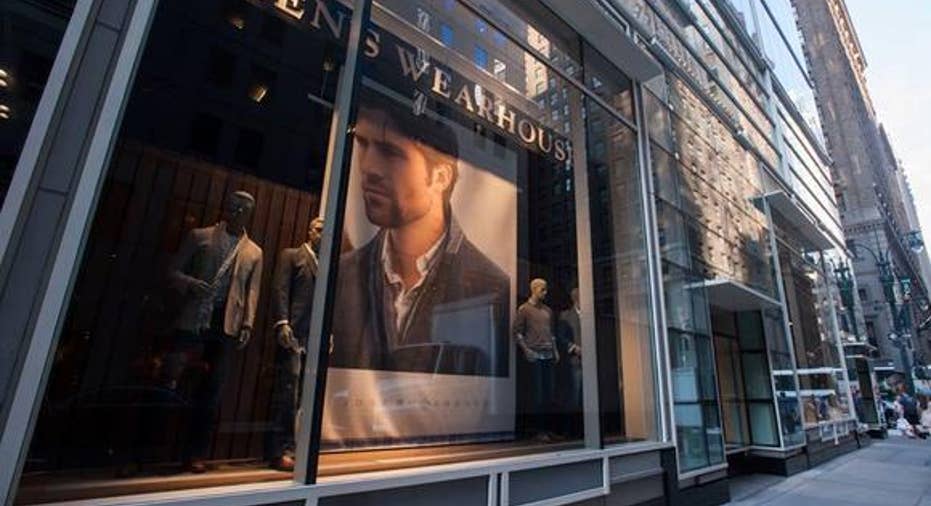The 5 Biggest Retail Flops of 2015

In a year that's seen once important mall-based retailers like Aeropostale, bebe, and Pacific Sunwearlose three-quarters or more of their value and turn into actual penny stocks, choosing the biggest retail flops of 2015 is what I like to call a TRE, a target-rich environment.
And when even a 27% plunge by Wal-Mart or a 20% drop by Kohl's is seen as not so bad in comparison to other debacles among retailers that aren't teetering on the brink of financial ruin, you know it's been a tough year.
The five retailers below (including their year-to-date stock move at the time of writing) were among the biggest flops in 2015. They're not all necessarily on the verge of financial ruin like the teen retailers above, but they've hardly done themselves or investors any favors this year either.
None of the financial engineering tricks of CEO Eddie Lampert has fixed the old-line retailer.
Sears Holdings -37%. The promise attached to spinning off its real estate investment trust Seritage Growth Properties that began the process of finally monetizing Sears' significant real estate portfolio, doesn't change the underlying weakness in the retailer's business of selling goods. Comparable-store sales at Sears stores were down nearly 10% in the third quarter and Kmart comps were down 7.5%, leading adjusted losses to widen to $305 million from $288 million in the same period last year. The old-line retailer has held on longer than many thought possible, but without real estate to prop up its value anymore, is there a reason for its existence?
Gap -38%. Teen retailer Gap may not be in the same race against time as its peers above, but it does find itself in need of accelerating the transformation of its varied brands into fast-fashion houses as it did with Old Navy. The success of such disposable clothing chains like H&M and Zara convinced Gap of the need to reimagine all of its brands in that fashion, but with even Old Navy reporting lower comps in the third quarter, it's possible we have hit peak fast-fashion. Gap may soon find it needs yet another new image once more.
Customers have been doing little more than window shopping at Macy's, and now it risks cannibalizing sales at full-price stores.
Macy's -45%. Like Gap, troubled department store chain Macy's looked to successful trends in the industry to model itself on. Its preferred image wasn't fast-fashion, but a different sort of discount concept, one more like T.J. Maxx and Marshalls. The retailer launched a new off-price chain of stores called Backstage that will feature name brand and private label merchandise designed specifically for the stores. It's a trend other department stores including Kohl's are latching onto as a means of reversing stalled sales, but by rolling it out into dozens maybe even hundreds of markets, Macy's will end up cannibalizing sales at its full-price stores, further undermining its recovery efforts.
Men's Wearhouse has become threadbare as its acquisition of Jos. A. Bank has pulled the thread on growth. The men's clothing store needs to take a more rational approach to weaning customers off sales. Photo: Men's Wearhouse.
Men's Wearhouse -65%. You're not going to like this. After acquiring rival Jos. A. Bank in a torturous takeover bid, Men's Wearhouse felt it could force its customers to go cold turkey on discounting. Having become accustomed to buy-one-get-three-free deals for so long, suddenly paying full price most of the time was not going to go over well. And it didn't. Following the failed game plan of J.C. Penney, which also tried to wean customers off of a highly promotional environment, the men's clothier has seen sales collapse by more than a third through the first week of December. Management finally realizes it may need to take a more measured approach to its discounting dilemma, but it's not going to be easy to win back customers.
Etsy -70%. Handmade-arts-and-crafts website Etsy is suffering from growing pains. While that can be a good thing, in adjusting to the new dynamic the artisan website risks alienating the very people who've helped it grow. The site wants to become an "everyday experience" to help stave off the threat posed by Amazon.com, whichrecently entered the handmade-crafts market, but helping some crafts people to grow big through initiatives like contract manufacturing is also angering the artists who eschew the commercialism of mass production.
While these retailers were knocked for a loop in 2015, one year's flop is many times next year's star. That is if they can pull themselves out of the spiral they find themselves in.
The article The 5 Biggest Retail Flops of 2015 originally appeared on Fool.com.
Rich Duprey owns shares of JCP. The Motley Fool owns shares of and recommends AMZN. The Motley Fool owns shares of ETSY. Try any of our Foolish newsletter services free for 30 days. We Fools may not all hold the same opinions, but we all believe that considering a diverse range of insights makes us better investors. The Motley Fool has a disclosure policy.
Copyright 1995 - 2015 The Motley Fool, LLC. All rights reserved. The Motley Fool has a disclosure policy.